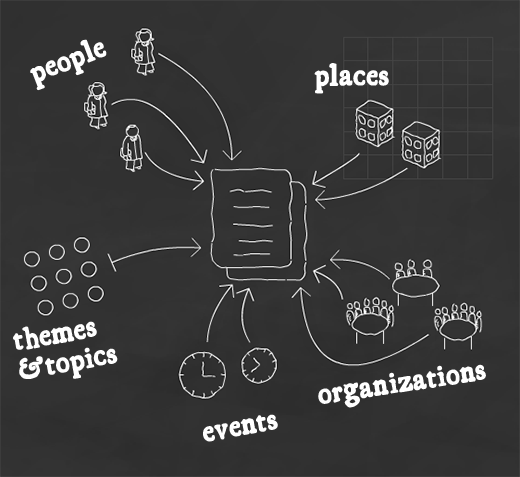UPDATE: Debrouwere continues the conversation with a response to the key points here, in the comments to his original post.
Dutch journalist/coder Stijn Debrouwere has written a very thorough post describing the ways in which standard tags, like the ones on this blog or on Flickr, fall short when applied to news articles. There are lots of things we might like to know about a story, such as where and when it happened and who was involved. This additional information, sort of like the index to a book, is known as “metadata”, and there is within the online journalism community a great call for its use, including by Debrouwere:
Each story could function as part of a web of knowledge around a certain topic, but it doesn’t.
So here’s a well-intentioned idea you’ve heard before: journalists should start tagging. Jay Rosen insists that “Getting disciplined and strategic about tagging” may be one way professional journalism separates itself from the flood of cheap content online.” Tags can show how a news article relates to broader themes and topics. Just the ticket.
News metadata is a major topic, and many people have speculated deeply about the value of creating news metadata at the time of reporting, such as the ever-sarcastic Xark and the thoughtful Martin Belam who writes about why “linked data” is good for journalism. But I’m going to respond to Debrouwere because I read him today, because he has lovely diagrams that explain his good ideas, and because, in criticizing “tags” as a form of metadata, I think he misses some very important points.
And he’s not alone. My sense is that many of the coder-journalists of today have not learned from the mistakes of generations of technically-minded people who wished to talk about the world in more precise ways.
Moving forward from simple tagging, Debrouwere imagines more sophisticated annotation schemes that start to pick up on what the tags actually mean. For starters, the tags could be drawn from separate “vocabularies.” Does a tag refer to a person, or a place, or perhaps an event? Debrouwere uses the following picture, which I’m going to borrow here because it explains the idea so nicely:
But, he says, we can get even more sophisticated. What did the story actually say? If it mentioned a person, what did it say about them? Was it an interview? A profile? Did it criticize them? Here’s the diagram he draws: Continue reading The world cannot be represented in machine-readable form
